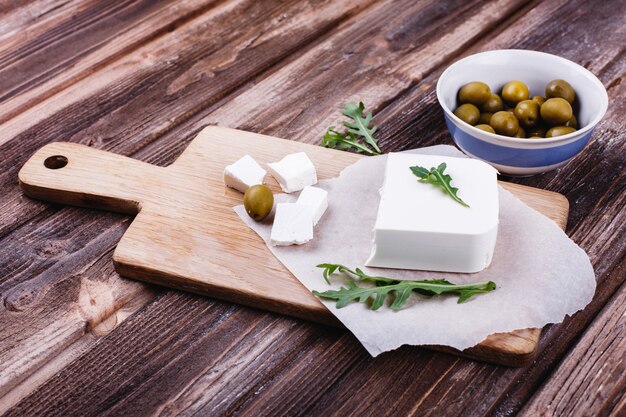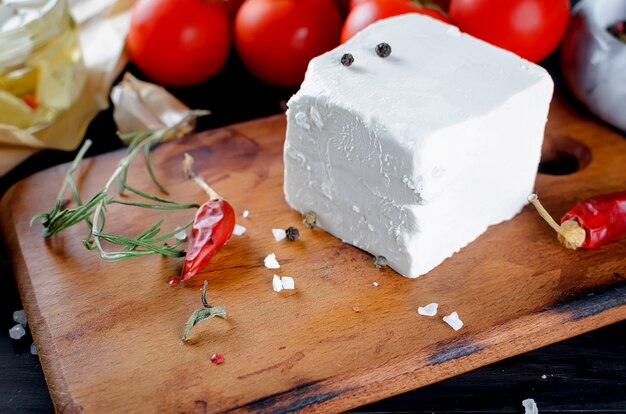Feta cheese is a beloved ingredient known for its tangy flavor and creamy texture. Originating from Greece, this cheese has made its way into salads, pastries, and countless recipes around the world. But is feta cheese healthy? This question often arises for those wanting to enjoy its taste while maintaining a nutritious diet.
Let’s dive into what makes feta cheese unique, its nutritional profile, and whether it truly deserves its spot in a healthy meal plan.
What is Feta Cheese?
Feta cheese is one of the oldest known cheeses in the world. Its rich history and distinct characteristics set it apart from other cheeses.
History and Origins of Feta Cheese
Feta originated in Greece, where it has been a dietary staple for centuries. The name “feta” means slice in Greek, referring to how the cheese is traditionally cut and stored in brine. Authentic Greek feta is made using sheep’s milk or a blend of sheep’s and goat’s milk.
How Feta Cheese is Made
The production of feta involves curdling milk with rennet or microbial enzymes. The curds are then pressed, sliced, and stored in brine, which gives feta its salty flavor and preserves its texture.
Types of Feta Cheese
There are two main types of feta cheese:
- Traditional Greek Feta: Made with sheep’s milk or a combination of sheep’s and goat’s milk, with a creamy, tangy taste.
- Modern Variations: Cow’s milk is often used in non-Greek versions, which are less tangy and firmer in texture.
Feta Cheese Nutrition Facts
Understanding feta’s nutritional profile can help determine if it fits into a healthy diet.
Caloric Breakdown
Feta cheese is relatively low in calories, making it a great addition to meals. A typical serving (28 grams or 1 ounce) contains about 75–80 calories, depending on the brand.
Macronutrients
- Protein: Feta cheese is a good source of protein, with around 4 grams per serving, supporting muscle repair and growth.
- Fat: It contains about 6 grams of fat, primarily saturated fat, which should be consumed in moderation.
- Carbohydrates: Feta is naturally low in carbs, with less than 1 gram per serving, making it suitable for low-carb diets.
Vitamins and Minerals
Feta cheese is rich in essential nutrients:
- Calcium: Helps maintain strong bones and teeth.
- Vitamin B12: Supports red blood cell formation and energy production.
- Phosphorus: Works with calcium to enhance bone health.
Sodium Content
Feta cheese is high in sodium due to the brine used in its preservation. A single serving contains about 300–400 mg of sodium, so those monitoring their salt intake should consume it in moderation.
Health Benefits of Feta Cheese
Feta cheese offers several health benefits, but it’s important to consider portion sizes.

Feta Cheese and Weight Loss
Is feta cheese healthy for weight loss? Absolutely, when eaten in moderation.
- Low Calorie Count: Its low calorie content makes it a portion-friendly addition to meals.
- Satiety Booster: The protein and fat in feta can keep you feeling full for longer, reducing the urge to snack on unhealthy options.
Feta Cheese for Bone Health
Strong bones need a consistent supply of calcium and phosphorus, both of which feta cheese provides in abundance.
- Calcium Content: One serving of feta delivers about 14% of the daily calcium requirement.
- Phosphorus: Supports calcium absorption and bone structure.
Feta Cheese and Gut Health
Good gut health is essential for overall well-being, and feta cheese can play a role here.
- Probiotics: Traditional feta contains beneficial bacteria that support digestion and a balanced gut microbiome.
- Lactose Tolerance: Its fermentation process reduces lactose, making it easier to digest for people with mild lactose sensitivity.
Feta Cheese for Your Heart
It can be heart-healthy when consumed as part of a balanced diet.
- Mediterranean Diet: Feta is a key ingredient in the Mediterranean diet, which is associated with lower risks of heart disease.
- Moderate Consumption: Small amounts of feta can provide flavor without significantly increasing saturated fat intake.
Feta Cheese and Diabetes
Is feta cheese healthy for diabetics? Yes, thanks to its low carbohydrate content.
- Low Glycemic Index: Feta does not cause significant blood sugar spikes.
- Healthy Fats: Its fat content can help stabilize blood sugar levels when paired with other low-GI foods.
Related to Read: Is Cream Cheese Healthy?: Detailed Benefits and Drawbacks
Feta Cheese vs. Other Cheeses
Feta cheese stands out among other popular cheeses, but how does it compare nutritionally? Let’s break it down.
Cheddar Cheese
- Calories: Feta has fewer calories, about 80 calories per ounce, compared to cheddar, which has around 115 calories per ounce.
- Fat: Feta contains less fat, making it a lighter option for weight-conscious individuals.
- Sodium: Both cheeses are salty, but feta is slightly higher in sodium due to its brine.
Mozzarella
- Calories: Mozzarella is lower in calories, with about 70 calories per ounce for fresh mozzarella.
- Fat: Mozzarella has a lower fat content, making it a milder alternative.
- Sodium: Feta is saltier than mozzarella, which is often favored for its milder taste.
Goat Cheese
- Calories: Goat cheese and feta are similar in calories, but goat cheese is slightly creamier.
- Fat: Both cheeses have comparable fat levels, but goat cheese may contain slightly more healthy fats.
- Sodium: Feta has a higher sodium content due to its preservation in brine.
Related to Read: Does Cottage Cheese Have Protein?
Is Feta Cheese Healthy During Pregnancy?
Feta cheese can be a nutritious addition to a pregnancy diet, but there are important considerations.
Safety Concerns
- Pasteurization: Ensure the feta cheese is made from pasteurized milk to avoid the risk of listeria, a harmful bacteria. Most commercially sold feta is pasteurized, but always check the label.
Nutritional Benefits
- Calcium: Feta’s high calcium content supports the baby’s bone development.
- Protein: It offers a good protein source, which is essential for fetal growth.
- Probiotics: These promote gut health, which is crucial during pregnancy.
Potential Downsides of Feta Cheese
While feta cheese offers several benefits, there are some drawbacks to be mindful of.

High Sodium Levels
Feta’s briny storage gives it a distinctive taste but also makes it sodium-rich. High sodium intake can increase blood pressure and lead to hypertension if consumed in excess.
Lactose Intolerance
Although feta is easier to digest than many cheeses, it still contains lactose, which can cause discomfort for those who are intolerant.
Allergic Reactions
Some individuals may be allergic to the proteins in sheep’s or goat’s milk. Symptoms include digestive upset or skin reactions. Always consult a doctor if you experience such issues.
How to Eat Feta Cheese Healthily
Feta cheese is versatile and can easily fit into a balanced diet when consumed wisely.
Incorporating Feta Cheese
- Add small amounts to salads, wraps, or grain bowls for a flavor boost.
- Crumble feta over roasted vegetables or pasta for added creaminess.
- Pair it with fresh fruit like watermelon or figs for a sweet and savory snack.
Tips for Portion Control
Stick to a single serving, about 1 ounce (28 grams), to enjoy its flavor without overindulging in sodium or fat.
Recipe Ideas
- Greek Salad: Combine feta with cucumbers, tomatoes, olives, and red onion.
- Mediterranean Wraps: Add feta, hummus, and fresh greens to a whole-wheat wrap.
- Stuffed Peppers: Fill bell peppers with a mixture of quinoa, feta, and spinach.
FAQs
Is feta cheese good for you?
Yes, feta cheese is nutritious, providing protein, calcium, and probiotics. However, moderation is key due to its high sodium content.
Is feta cheese healthy for diabetics?
Yes, feta’s low carbohydrate content and glycemic index make it a good option for diabetics.
Is feta cheese high in protein?
Feta is moderately high in protein, offering about 4 grams per ounce, making it a good addition to balanced meals.
How much feta cheese should I eat daily?
Stick to a single serving (1 ounce) to enjoy its benefits without overloading on sodium or fat.
Can feta cheese be part of a weight-loss diet?
Yes, its low calorie and high flavor profile make it ideal for weight management when eaten in moderation.
Conclusion
Feta cheese is a delicious and nutritious addition to meals. Its calcium, protein, and probiotic content make it a valuable part of a balanced diet. However, due to its high sodium content, portion control is essential.
Looking to enjoy feta cheese healthily? Try pairing it with fresh vegetables, whole grains, or fruits for a Mediterranean-inspired meal that’s both satisfying and nourishing.

